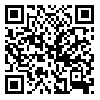BibTeX | RIS | EndNote | Medlars | ProCite | Reference Manager | RefWorks
Send citation to:
URL: http://jemr.khu.ac.ir/article-1-340-en.html
2- University of Economic Sciences ,
In recent years, financial economists have increasingly recognized the interaction between market structure and capital structure or financial decisions of the firms.
This research analyzes the relationship between market structure (power) and the capital structure (leverage ratio) of listed companies in Tehran Stock Exchange (TSE) based on static and dynamic approach. In this research we study a balanced panel dataset of 101 firm-year observations from 2006 to2010 and test significant relationship for testing hypothesis.
First we use pooled regression to determinant the relationship between capital structure, market structure (Tobin's Q) and five control variables including profitability, size, collateral value of assets, growth rate of assets and uniqueness of assets. After employing chow and hausman test, we selected fixed effect panel data model. Also we employed GMM method to have more efficient result and also to cope with the unobservable firm-specific characteristics and endogeneity problems.
Our results suggest that the relationship between leverage and market structure is non-linear (cubic) due to the complex interaction of market conditions, agency problems and bankruptcy costs. The study finds a negative relationship between capital structure and profitability and also positive relation between capital structure and the size. So, profitable companies tend to use internal financing such as retained earnings and issuing new shares instead of debt financing. Also big companies prefer to use more leverage due to desirable conditions for getting loans. Our evidence shows that Iranian listed companies are generally more subject to agency cost theory (limited liability effect) and tax shield theory. Finally, the system-GMM results reveal that managers of Iranian firms tend to adjust dynamically their leverage ratios over time.
Received: 2011/11/19 | Accepted: 2013/02/24 | Published: 2013/02/24
| Rights and permissions | |
 | This work is licensed under a Creative Commons Attribution-NonCommercial 4.0 International License. |






